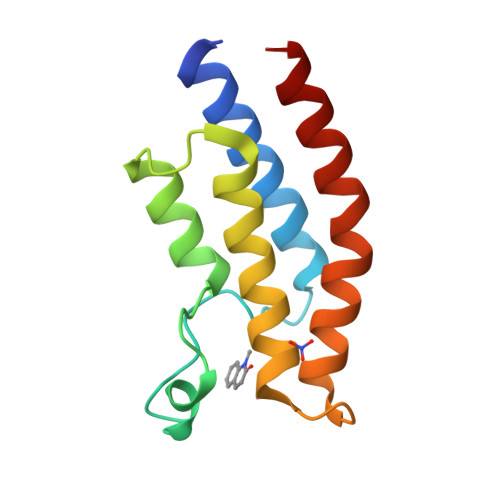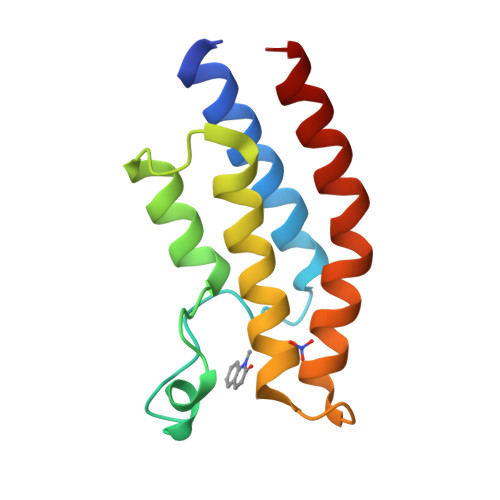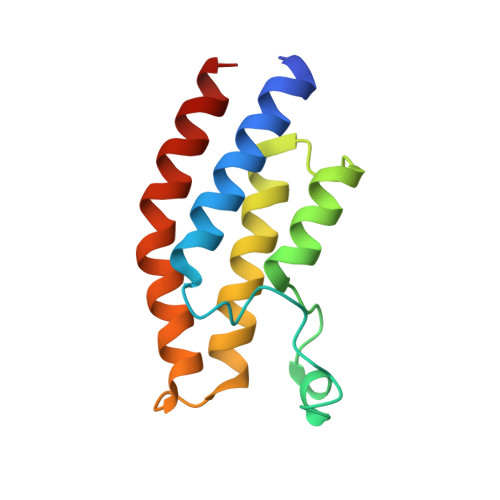Design of a Biased Potent Small Molecule Inhibitor of the Bromodomain and PHD Finger-Containing (BRPF) Proteins Suitable for Cellular and in Vivo Studies.
Igoe, N., Bayle, E.D., Fedorov, O., Tallant, C., Savitsky, P., Rogers, C., Owen, D.R., Deb, G., Somervaille, T.C., Andrews, D.M., Jones, N., Cheasty, A., Ryder, H., Brennan, P.E., Muller, S., Knapp, S., Fish, P.V.(2017) J Med Chem 60: 668-680
- PubMed: 28068087
- DOI: https://doi.org/10.1021/acs.jmedchem.6b01583
- Primary Citation of Related Structures:
5T4U, 5T4V - PubMed Abstract:
The BRPF (bromodomain and PHD finger-containing) family are scaffolding proteins important for the recruitment of histone acetyltransferases of the MYST family to chromatin. Evaluation of the BRPF family as a potential drug target is at an early stage although there is an emerging understanding of a role in acute myeloid leukemia (AML). We report the optimization of fragment hit 5b to 13-d as a biased, potent inhibitor of the BRD of the BRPFs with excellent selectivity over nonclass IV BRD proteins. Evaluation of 13-d in a panel of cancer cell lines showed a selective inhibition of proliferation of a subset of AML lines. Pharmacokinetic studies established that 13-d had properties compatible with oral dosing in mouse models of disease (F po 49%). We propose that NI-42 (13-d) is a new chemical probe for the BRPFs suitable for cellular and in vivo studies to explore the fundamental biology of these proteins.
Organizational Affiliation:
UCL School of Pharmacy, University College London , 29/39 Brunswick Square, London WC1N 1AX, U.K.




















